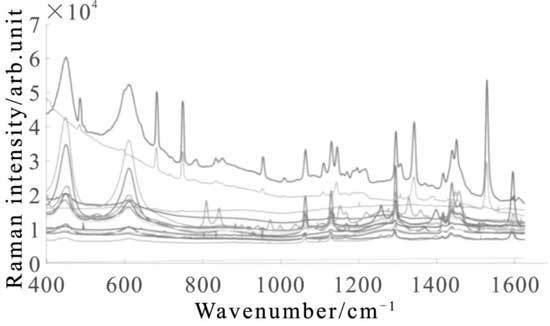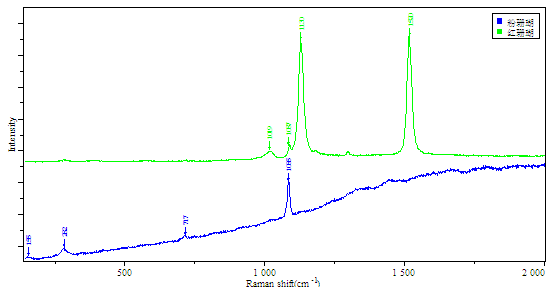
Study on test and classification of Plastic Handkerchief paper packaging bags based on Raman Spectroscopy and K-means
Introduction
Handkerchief tissues are widely used in daily life, and fragments of their packaging are frequently found at crime scenes. Identifying the type and origin of these tissues can provide valuable clues about the user’s identity and movements, thereby contributing significantly to criminal investigations. However, the remnants of packaging materials left at crime scenes are often partially degraded due to environmental factors, making it difficult to trace the brand or origin of the tissue and complicating classification efforts. This highlights the need for more advanced analytical techniques.
Due to differences among manufacturers, synthesis processes, additives, and production equipment, the plastic packaging of various handkerchief tissues exhibits distinct physical and chemical characteristics. These differences directly affect Raman scattering intensity. Therefore, Raman spectroscopy serves as an effective method for distinguishing between different tissue packages, offering critical support for the analysis of plastic evidence found at crime scenes.
Research Outcomes
Recently, Professor Jiang Hong’s research team at the People’s Public Security University of China conducted a modeling analysis of handkerchief tissue packaging samples using MATLAB. They performed Raman spectral data preprocessing and similarity analysis, and applied K-means clustering to classify the samples. This enabled the determination of an appropriate number of clusters (K) and allowed successful differentiation among packaging types.
Handkerchief tissue packaging is composed of plastic polymers, primarily resins, with plasticizers, fillers, lubricants, and colorants as additives. The main fillers include synthetic resins such as polyethylene (PE), polyvinyl chloride (PVC), and polypropylene (PP), with common plastic additives being calcium carbonate (CaCO₃), talc, and barium sulfate (BaSO₄). Based on filler types, the samples were categorized into three main groups (see Table 3):
-
Type I: Primarily composed of polyethylene (see Figure 2)
-
Type II: Primarily composed of polyvinyl chloride (see Figure 3)
-
Type III: Primarily composed of polypropylene (see Figure 4)


Table 3 Sample Classification of Handkerchief Paper Plastic Packaging Bags

Raman spectra of the Fig. 2 class I samples

Raman spectra of the Fig. 3 class II samples

Raman spectra of Fig. 4 Class III samples
Prior to clustering, Principal Component Analysis (PCA) was applied for data dimensionality reduction to enhance analytical accuracy, based on the total variance-covariance matrix. Components with a contribution rate above 1%—namely PC1, PC2, and PC3—were selected for feature extraction and further analysis.
K-means clustering, a fast and unsupervised classification method, does not require prior knowledge of the number of sample groups. Using the kmeans and silhouette functions in MATLAB, the team determined optimal K values and validated the clustering accuracy. The resulting classification accuracy reached 93%. With reference data from known samples, the method allowed for rapid and accurate classification of unknown samples, achieving a successful classification rate of 97.14%.
This approach, which integrates computer-based software techniques and spectroscopic analysis, is significantly faster and more accurate than traditional spectral analysis methods. It enhances data processing efficiency and demonstrates high classification performance even with high signal-to-noise ratio data. With robust background tolerance, the method is applicable in forensic practice for analyzing partial remnants of handkerchief tissue packaging found at crime scenes. It can help trace the movement of suspects and contribute valuable evidence in criminal proceedings.
Article Information
This research was recently published under the title “Study on the Analysis of Handkerchief Tissue Packaging Using Raman Spectroscopy Combined with K-Means Clustering.” The work was completed by Professor Jiang Hong’s research group at the People’s Public Security University of China.
Access the full article here:
http://www.cnki.com.cn/Article/CJFDTotal-GSSX201902009.htm
The study employed the Finder Insight portable Raman spectrometer developed by Beijing Zhuoli Hanguang Instrument Co., Ltd. For more information about this product, please contact our company.
Disclaimer
The content, images, and data presented by Beijing Zhuoli Hanguang Instrument Co., Ltd. originate from the original authors or are republished with permission. Copyright, data, and opinions expressed belong to the original authors and sources. Beijing Zhuoli Hanguang strives to ensure accuracy and rigor in its data. If you find any errors or have concerns about copyrights or content, please contact us via phone or email. We will address and resolve the matter accordingly.
The final interpretation of this content rests with Beijing Zhuoli Hanguang Instrument Co., Ltd.
